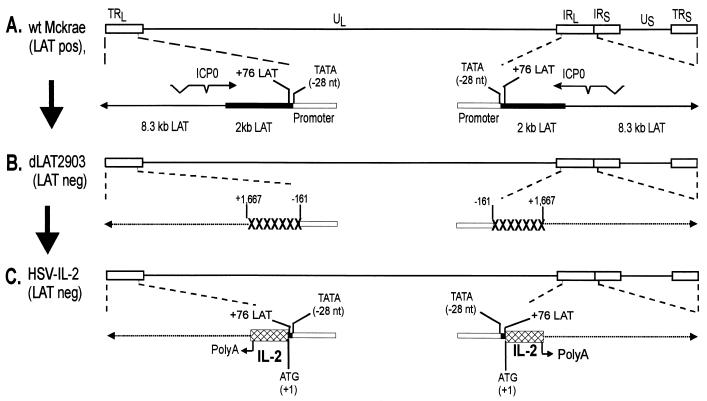FIG. 1.
Construction and structure of HSV-IL-2. (A) This schematic shows the wild-type (wt) HSV-1 strain McKrae genome in the prototypic orientation. TRL and IRL represent the terminal and internal (or inverted) long repeats, respectively, and TRS and IRS represent the terminal and internal (or inverted) short repeats, respectively. UL and US represent the long and short unique regions, respectively. The solid rectangle represents the very stable 2-kb LAT. The arrow at +1 indicates the start site for LAT transcription. (B) dLAT2903 has a deletion of LAT nucleotides −161 to +1667 relative to the start of LAT transcription in both copies of LAT. The dashed lines indicate no synthesis of LAT RNA. (C) HSV-IL-2 was constructed by homologous recombination between dLAT2903 DNA and a plasmid containing the complete LAT promoter and the entire structural IL-2 gene (including its 3′ polyadenylation signal) bounded by 880- and 2,989-bp LAT fragments as described in Materials and Methods.

